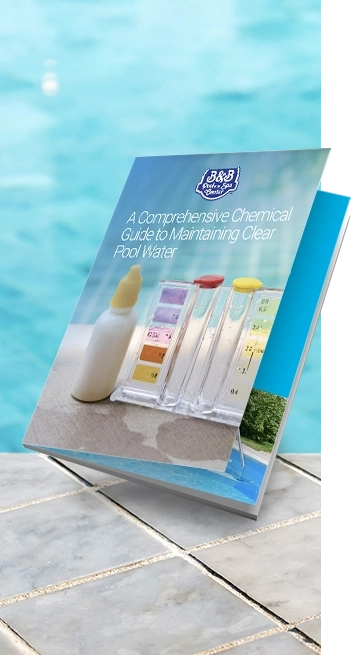Phosphates: Understanding the Causes and Effective Solutions
Pool Education, Sanitation
You’ve tried everything, yet your pool is still green. What’s the cause? Are you missing something? Well, believe it or not, phosphates may be the problem, leading to various issues if left unaddressed. In this article, we’ll dive into what causes phosphates in pools and explore effective solutions to maintain a pristine swimming environment all season long.
Understanding Phosphates: Sources of Phosphates in Pools
Phosphates are chemical compounds that contain phosphorus, an essential nutrient for all living organisms. In natural environments, they are typically present in low concentrations and play a vital role in biological processes. However, when phosphates find their way into swimming pools, they can cause numerous problems; they can be found in places such as:

Tap Water– Municipal water sources often contain trace amounts of phosphates, used to reduce metals and other inorganic contaminants in the water.
Rainwater– Rainwater can wash contaminants from the atmosphere into the pool, including phosphates.
Organic Matter– Leaves, grass, pollen, and other organic debris that fall into the pool can introduce phosphates as they break down. So pick up your yard clippings after a fresh mow!
Fertilizers and Landscaping– Plants, grass, fertilizers, or yard treatments containing phosphates can run off into the pool during rain or watering.
Pool Chemicals– Yes, even some pool chemicals may contain phosphates as additives, inadvertently increasing their levels in the water.
There is no way to fully remove phosphates from your pool, but knowing what causes them and taking proactive actions can reduce their presence in your swimming pool.
The Impact of Phosphates on Pool Water
If you have had this problem often, you know it can seem like a never-ending situation, and excessive amounts of phosphates can lead to large algae blooms and a long process to recover the chemistry of your pool.
Phosphates serve as a nutrient source for algae. When levels are elevated, it can fuel rapid algae growth, turning the pool water green and cloudy.
Once the algae makes its way in, there goes your water quality. High phosphate levels can affect water balance and make it difficult to maintain the pool’s chemical parameters, leading to imbalanced pH, alkalinity, and sanitizer levels.
So, to get your pool back on track, you may need to increase the amount of chlorine. Phosphates can consume chlorine in the water, resulting in higher chlorine consumption to maintain proper disinfection levels. Stains may also form on pool surfaces and equipment due to a high concentration of algae.
Addressing Phosphate Issues
Now that we understand the causes and impacts let’s explore some effective solutions for their management.
Testing, Testing, One, Two
We talk about it all the time when it comes to regular pool maintenance, and it’s the same while trying to combat phosphates. Regularly test the pool water for phosphate levels, especially during the swimming season. Pool owners can use test kits available at pool supply stores to measure phosphate concentrations.
Maintaining properly balanced water chemistry is essential to prevent algae growth. Regularly check and adjust the pH, alkalinity, and sanitizer levels to keep the water balanced.
Source Control and Proper Filtration
Minimize the introduction of phosphates into the pool by using a hose-end filter when filling the pool. Ensure that the pool filtration system is functioning optimally. Backwash or clean the filter regularly to remove trapped contaminants and phosphates.
Consider using phosphate removers or treatments specifically designed to reduce the levels in the pool. These products work by binding with phosphates, making them unavailable for algae growth. Try to avoid the use of phosphate-containing products near the pool.
Implement an effective algae prevention program that includes regular brushing, skimming, and maintaining proper chlorine levels. Keep your pool covered to lower the amount of debris and other outside objects that can enter your pool when not in use. An algae inhibitor can also be added to prevent algae growth.
Don’t Let Phosphates Ruin Your Summer Fun
So you don’t have to panic the next time you step outside to see your pool full of green ick. Because now you know about phosphates, their causes, and how to combat the problem. With this information, you are armed and prepared to bring your swimming pool back to a clean and healthy state.
By regularly testing the water, controlling the sources, and chemical balancing the water, pool owners can effectively manage phosphate levels and enjoy a crystal-clear swimming pool all season long. Remember, consistent maintenance and proactive measures are the keys to keeping your pool inviting and refreshing for all swimmers. And if you just can’t be bothered to do the work yourself, call a trusted pool professional to give you a hand!


